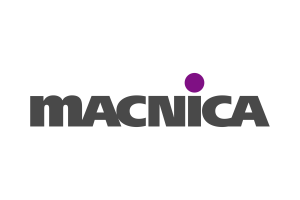Trackwise
PV aircraft with the world's longest flexible circuit
Trackwise manufactured the world's longest flexible circuit with 26 m for the wing of an unmanned solar airplane.
Trackwise's flexible circuits weigh more than 60 percent less than the traditional wiring harness, so the UAV (Unmanned Aerial Vehicle) manufactured in the US can transport more payload or achieve a higher range than equipped with a traditional wiring harness.
Trackwise manufactured the flexible circuit in record length using the Improved Harness Technology (IHT) developed and patented in-house, and adapted the machines in cooperation with the equipment manufacturers so that they could manufacture the multilayer flexible circuits on a roll-to-roll basis.
Until now, flexible printed circuit boards have hardly been available in lengths of more than 2 meters. To bridge greater distances, they have to be connected piece by piece using connectors, which are expensive and lead to poorer electrical properties compared to a single-piece printed circuit board.
This is all the more true when compared to the cable harnesses traditionally used. The connectors required are heavy, and if many of them have to be installed, this reduces the reliability of the overall system. The flexible printed circuits can dissipate heat much better, so the current through the conductors can be higher for the same cross-section.
All this leads to the fact that by using the flexible printed circuits in one piece in the UAV, more than 60 percent of the weight that a cable harness would weigh can be saved.
Another significant advantage is that the flexible printed circuit boards can be laid much faster and with less effort than complex cable harnesses. This reduces production costs - not only in the UAV. That's why commercial aircraft manufacturers are very interested in it. Because more than 100 km of cables are laid in a larger passenger aircraft, there would be many possibilities for savings through multi-layer flexible printed circuit boards manufactured from a single piece over long lengths.
Philip Johnston, CEO of Trackwise, can't be afraid that even longer flexible circuit boards would have to be used there than in the current UAV, as he explained in an interview with Markt&Technik: "Basically, the IHT process is not subject to any length restrictions. We can produce printed circuit boards for use on wind turbine rotor blades that are 60 m long".
Integrated Components make Flexible Circuits smart
Another interesting aspect of the technology comes into play here: Additional components can be integrated into the multi-layer flexible circuit boards, ICs, sensors, heating elements and passive components. "This turns the flexible circuit boards into a smart element."
This is also very promising for cars. Similar to airplanes, complex and heavy cable harnesses are used. They are expensive in themselves and their installation costs have a negative impact once again. In addition, they take up a lot of space and restrict the freedom of the designers. It is therefore no wonder that the automotive industry is also interested in at least partially replacing cable harnesses with flexible printed circuit boards.
According to Philip Johnston, electrified cars with battery supply also open up great opportunities for flexible printed circuit boards, especially for smart variants with integrated sensors and ICs. "We are currently developing types with particularly flat surfaces that are designed for high voltages and are used directly on the battery for the management system," he says.
It's no coincidence that Trackwire is involved in manufacturing large printed circuits. The company, which is celebrating its 30th anniversary this year, had already developed and manufactured 9-foot long PCBs in 1995. They were used as antennas for base stations in the telecommunications infrastructure. This is also how the production processes for these boards were created.
In 2011, Rolls Royce gave the impetus to expand the production of very long PCBs to multilayer flexible types. Rolls Royce wanted to replace the cables in jet engines with flexible printed circuit boards. "8 m length was the target," recalls Philip Johnston. Most companies who heard of this simply didn't think it was possible. "Because we had already gained experience with the production of long circuit boards, we were convinced that we could meet the requirements.
This has resulted in a separate line of business that is currently growing rapidly. In order to expand this branch, larger investments were necessary, which is why Trackwise went public. At the moment, the traditional pillar - the development and manufacture of printed antennas for the communications infrastructure - still accounts for the majority of the company's total turnover of £4 million. Trackwise's know-how in the field of antennas lies primarily in the selection of the right RF materials in order to optimize the antennas to the requirements at the respective location.
However, Philip Johnston is certain that the flexible printed circuit boards will already contribute more than 50 percent to total sales in the coming year. The aviation industry and the automotive business in particular would contribute to this.





